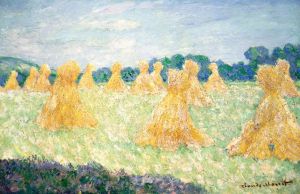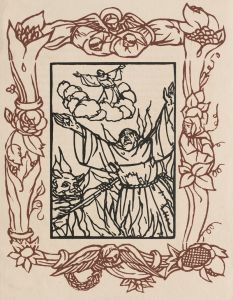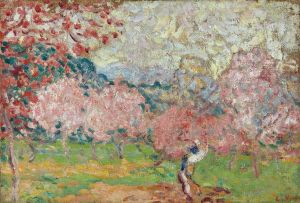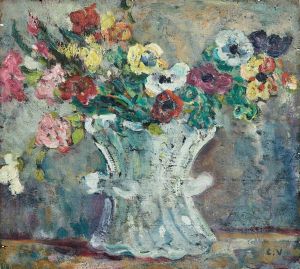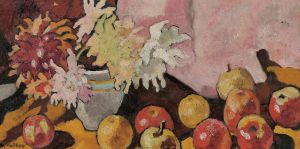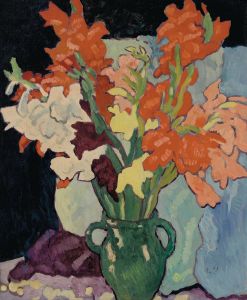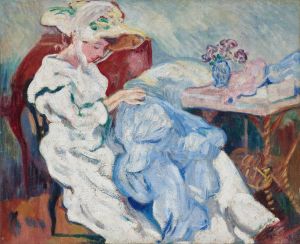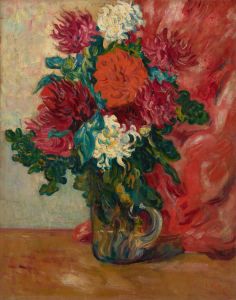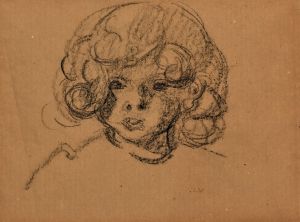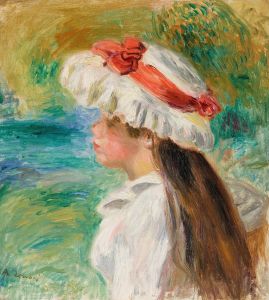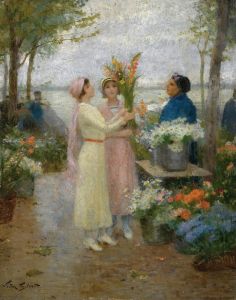
Columbine
A hand-painted replica of Louis Valtat’s masterpiece Columbine, meticulously crafted by professional artists to capture the true essence of the original. Each piece is created with museum-quality canvas and rare mineral pigments, carefully painted by experienced artists with delicate brushstrokes and rich, layered colors to perfectly recreate the texture of the original artwork. Unlike machine-printed reproductions, this hand-painted version brings the painting to life, infused with the artist’s emotions and skill in every stroke. Whether for personal collection or home decoration, it instantly elevates the artistic atmosphere of any space.
Louis Valtat was a French painter associated with the Post-Impressionist movement, known for his vibrant use of color and innovative techniques. He was born on August 8, 1869, in Dieppe, France, and studied at the École des Beaux-Arts and the Académie Julian in Paris. Valtat was part of a generation of artists who were influenced by Impressionism but sought to push the boundaries of color and form, leading to the development of Fauvism and other modern art movements.
"Columbine" is one of Valtat's works that exemplifies his style during the late 19th and early 20th centuries. While specific details about the painting "Columbine" are scarce, Valtat's body of work during this period often featured bold colors and dynamic compositions, reflecting his interest in capturing the essence of his subjects rather than their precise details. His paintings frequently depicted scenes from everyday life, landscapes, and still lifes, characterized by a vivid palette and expressive brushwork.
Valtat's work was influenced by his contemporaries, including Pierre-Auguste Renoir and Paul Signac, and he was associated with the Nabis group, a collective of avant-garde artists who emphasized the importance of color and symbolism in painting. Although not as widely known as some of his peers, Valtat's contributions to the development of modern art were significant, as he helped bridge the gap between Impressionism and the more radical movements that followed.
Throughout his career, Valtat exhibited his work in various salons and galleries, gaining recognition for his unique approach to color and form. His paintings were well-received by critics and collectors alike, and he participated in several important exhibitions, including the Salon des Indépendants and the Salon d'Automne, which were instrumental in promoting new artistic movements in France.
Valtat's artistic style evolved over time, but he remained committed to exploring the possibilities of color and light in his work. His paintings often feature a sense of spontaneity and energy, capturing the vibrancy of the world around him. Despite facing health challenges later in life, Valtat continued to paint until his death on January 2, 1952, in Paris.
Today, Louis Valtat's work is held in various public and private collections worldwide, and he is recognized as an important figure in the transition from Impressionism to Fauvism. His paintings, including "Columbine," continue to be appreciated for their bold use of color and innovative approach to composition, reflecting the dynamic changes in art during the late 19th and early 20th centuries.





